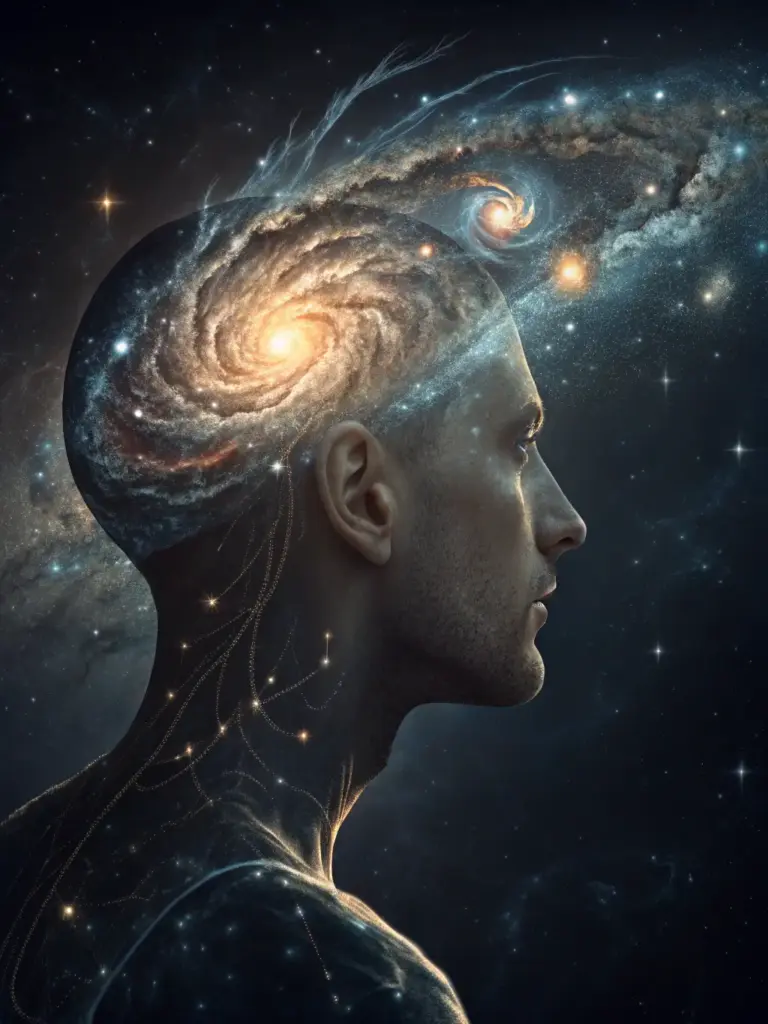
Where It All Began: How Our Ancient Brain Created Modern Stress
Discover why your brain feels overwhelmed — and how evolution holds the answers.
🧬 The Evolutionary Roots of Stress: Your Brain Is Not Made for Modern Life
In our fast-paced digital world, stress, anxiety, and emotional exhaustion have become the norm. But what if the problem isn’t you — what if it’s your brain?
Your emotional system wasn’t built for notifications, deadlines, or social comparison. It was forged in prehistoric forests, deserts, and savannahs — where threats were real, social rejection meant death, and survival depended on instinct, not logic.
This ancient design still lives inside your skull today.
Understanding this mismatch is not just interesting — it’s essential for regaining control over your mental well-being.
1. 🦠 Before Humans: Instinct Was Everything
Long before humans walked the earth, simple creatures evolved basic nervous systems to respond to danger:
Pain meant: escape.
Food meant: pursue.
Threat meant: freeze, fight, or flee.
These responses formed the emotional core of your brain — still active today in your amygdala, the brain’s rapid-response center. According to Dr. Joseph LeDoux, a leading neuroscientist at NYU, the amygdala “can detect threat and initiate fear responses before you’re even consciously aware of it” (LeDoux, 2015).
2. 🧑🤝🧑 Early Humans: Social Pain Became Real Pain
About 300,000 years ago, Homo sapiens emerged with a brain optimized for social life. Belonging to a tribe became as crucial as finding food. Evolution rewired the brain to treat social rejection like a physical threat.
💬 A study by Dr. Naomi Eisenberger (UCLA) showed that social exclusion activates the same brain regions as physical pain.
That’s why:
A negative comment online can feel like an attack.
Being ignored can trigger panic.
Group pressure can override rational thought.
3. 🌆 The Modern World: Too Fast, Too Loud, Too Much
Today’s environment is radically different from the slow-paced, nature-based life we evolved in:
Cities scream with noise, lights, sirens.
Phones buzz 24/7 with endless decisions and comparisons.
Social media magnifies every flaw, every difference, every moment.
Yet your brain still reacts as if you’re being chased by a predator:
| Modern Trigger | Ancient Interpretation |
|---|---|
| Critical email | Social rejection = death |
| 50 open tabs | Overwhelm = danger |
| Ghosted message | Abandonment = threat |
| Too many tasks | Panic = flee or freeze |
This is the essence of the evolutionary mismatch.
4. 🧠 You’re Not Broken — You’re Just Prehistoric
Your stress isn’t a personal flaw. It’s a system that worked perfectly… 10,000 years ago.
🔍 According to Dr. Lisa Feldman Barrett, author of “How Emotions Are Made”, emotions are “constructed from predictions based on past experiences.” Your brain is doing its job — it’s just outdated for your current environment.
Instead of blaming yourself, start understanding your wiring.
5. 🧪 From Single Cells to Consciousness: How the Brain Evolved
The brain didn’t appear overnight. It evolved layer by layer:
| Evolutionary Stage | Brain Feature | Modern Effect |
|---|---|---|
| Jellyfish | Nerve nets | Basic reflexes |
| Worms & Fish | Early brains | Move toward food, away from pain |
| Reptiles | Brainstem | Fight-or-flight response |
| Mammals | Limbic system | Emotions, memory, social bonding |
| Apes | Advanced cortex | Problem solving, tool use |
| Humans | Prefrontal cortex | Planning, reflection, imagination |
But here’s the twist: Old layers weren’t replaced — they’re still active. That’s why you can be calm one moment, then triggered into fear or rage the next.
6. 🔄 Why Modern Stress Feels So Different
Ancient stress was short and sharp: “Run or be eaten.”
Modern stress is chronic and silent: “Am I good enough?” “Will they like my post?” “Am I falling behind?”
Your ancient brain was built to survive, not to thrive in modern complexity.
📉 Studies from the American Psychological Association show that chronic stress reduces prefrontal function, weakens memory, and increases emotional reactivity.
Unless we learn to adapt consciously, stress will remain the default setting.
7. 🛠 What You Can Do (Starting Today)
✅ Name It: “This is my ancient brain reacting.”
✅ Pause Before Reacting: Breathe. Observe. Don’t obey every impulse.
✅ Track Triggers: Learn what makes your brain flip into survival mode.
✅ Rewire With Repetition: Build calm habits through daily conscious effort. Your brain can change — thanks to neuroplasticity.
✅ Be Kind to Yourself: You are not lazy, broken, or weak — you’re human.
🧠 Summary Table: Evolution Meets Modern Life
| Evolutionary Trait | Original Purpose | Modern Misfire |
|---|---|---|
| Fear of exclusion | Stay with the tribe | Social anxiety, people-pleasing |
| Hypervigilance | Detect predators | Burnout from email/push notifications |
| Energy conservation | Survive famine | Procrastination, resistance to change |
| Emotional memory | Avoid pain | Rumination, trauma loops |
💬 Final Thought: Work With Your Brain, Not Against It
You’re not weak — you’re wild inside.
Your ancient instincts helped your ancestors survive lions, famines, and exile. But now they need your guidance — not your shame.
The more you understand your evolutionary blueprint, the more power you gain to break free from automatic stress and train your mind for peace.
🧘♀️ “You can’t always control what your brain was built to do, but you can learn to influence what it does next.”
Where It All Began: How Our Ancient Brain Created Modern Stress
Discover why your brain feels overwhelmed — and how evolution holds the answers.
The human brain was wired for a dangerous, unpredictable environment. Our primal survival mechanisms—like the stress response—helped early humans escape predators and physical threats. But in today's digital, fast-paced world, those same circuits often trigger in response to psychological pressures, deadlines, and constant information flow. This evolutionary mismatch explains chronic anxiety, stress, and burnout, and highlights the importance of strategies adapted to modern life.
References
Human Brain Statistics with Visual Charts
Brain Statistics Overview
Interactive visualization of key brain metrics and data points
Energy & Resource Usage
Energy • Blood Flow • Oxygen
Brain Development Timeline
Development stages by age
Brain System Comparison
Speed: Milliseconds
Function: Survival & reflexes
Speed: Seconds
Function: Emotions & memory
Speed: Minutes
Function: Higher thinking
Mind Origins | Complete Brain Statistics with Visual Data
© 2025 | Interactive Brain Data Visualization
